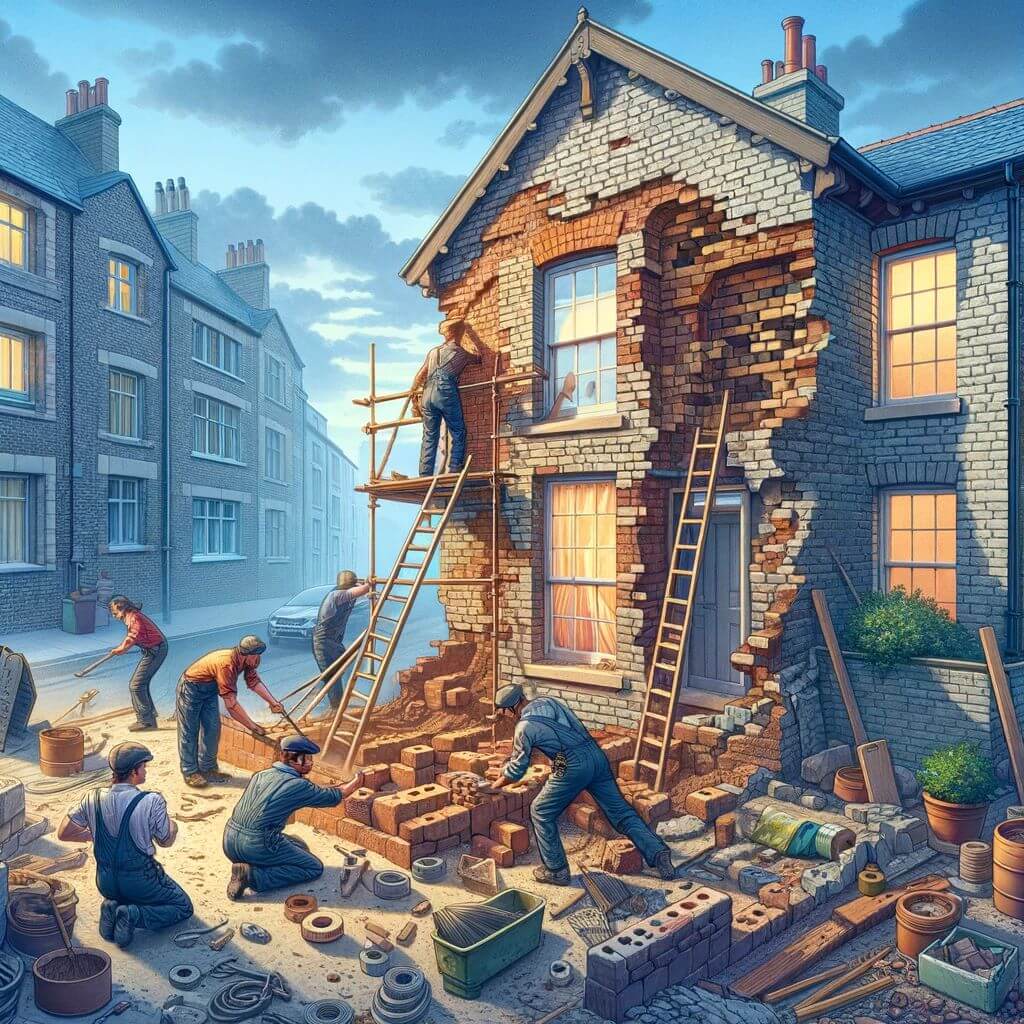
Frederick, Maryland, is a city steeped in history, with numerous historic buildings and structures that contribute to its unique charm. Over time, these masonry structures can deteriorate due to age, weather, and other factors, necessitating careful restoration to preserve their integrity and beauty. In this article, we’ll showcase several successful masonry restoration projects in Frederick, highlighting the techniques and materials used to bring these buildings back to their former glory.
Importance of Masonry Restoration in Frederick Md
Masonry restoration is a crucial process for maintaining the structural integrity and aesthetic appeal of historic buildings. When left untreated, deteriorating masonry can lead to more extensive damage, compromising the safety and longevity of the structure. By addressing issues like cracked mortar, spalling bricks, and damaged stone, restoration experts can prevent further decay and ensure that these buildings continue to stand strong for generations to come.
Repointing: A Key Technique in Masonry Restoration in Frederick Maryland

One of the most common techniques used in masonry restoration is repointing. This process involves removing deteriorated mortar from the joints between bricks or stones and replacing it with new, properly mixed mortar. Repointing not only improves the appearance of the masonry but also helps prevent water infiltration and further damage. In Frederick, many historic buildings have benefited from expert repointing, including:
- The Hessian Barracks: Built in the 1770s, this stone structure was once used to house German mercenaries during the American Revolution. In recent years, the barracks underwent extensive repointing to address crumbling mortar and ensure its structural integrity.
- The Josephine Bowers House: This 19th-century brick home, now serving as a bed and breakfast, required careful repointing to maintain its charming exterior. By using historically accurate mortar mixes and techniques, restoration experts were able to preserve the home’s character while fortifying its structure.
Brick Repair and Replacement
In addition to repointing, masonry restoration often involves repairing or replacing damaged bricks. Over time, bricks can crack, spall, or become discolored due to exposure to the elements, improper maintenance, or structural issues. Skilled masons can carefully remove damaged bricks and replace them with matching materials, ensuring a seamless and authentic repair. Notable brick repair projects in Frederick include:
- The Patrick Street Townhouses: These iconic 19th-century townhouses, with their red brick facades, required extensive brick repair and replacement to address years of wear and tear. By sourcing historically accurate bricks and using traditional masonry techniques, restoration experts were able to preserve the townhouses’ distinctive appearance.
- The Frederick News-Post Building: Originally constructed in the 1920s, this landmark building underwent a significant brick repair project to address deteriorating mortar and damaged bricks. The restoration not only improved the building’s aesthetic but also helped maintain its structural integrity.
Stone Restoration and Cleaning
Frederick is also home to numerous historic stone buildings, which require specialized restoration techniques to preserve their unique character. Stone restoration often involves cleaning, repairs, and sometimes even replacement of damaged elements. Proper cleaning techniques, such as low-pressure water washing and gentle abrasive methods, are essential to avoid causing further damage to the stone. Examples of successful stone restoration projects in Frederick include:
- The Frederick County Courthouse: Built in the early 1800s, this impressive stone structure has undergone several restoration projects over the years, including cleaning, repair, and replacement of damaged stone elements. These efforts have helped maintain the courthouse’s stately appearance and ensure its longevity.
- The Schifferstadt Architectural Museum: This 18th-century German colonial farmhouse, constructed of native stone, required careful restoration to address deteriorating mortar caps and damaged stone surfaces. By using historically accurate materials and techniques, restoration experts were able to preserve this unique piece of Frederick’s architectural heritage.
The Role of Skilled Craftsmanship

Successful masonry restoration projects rely heavily on the skill and expertise of trained masons and restoration specialists. These professionals have a deep understanding of historic materials, techniques, and the specific needs of each building. By working closely with historians, architects, and property owners, they ensure that each restoration project is carried out with the utmost care and attention to detail, respecting the original craftsmanship while incorporating modern preservation methods.
Preserving Frederick’s Architectural Heritage
Masonry restoration plays a vital role in preserving Frederick’s rich architectural heritage. By carefully restoring and maintaining these historic structures, we not only honor the craftsmanship and legacy of the past but also ensure that future generations can appreciate and learn from these tangible pieces of history. Successful restoration projects, like those mentioned above, serve as a testament to the importance of investing in the preservation of our built environment.
Combining Restoration with Modern Upgrades

While preserving the historic character of Frederick’s masonry buildings is paramount, restoration projects also provide opportunities to integrate modern upgrades that improve energy efficiency, accessibility, and overall functionality. For example, during a restoration project, property owners may choose to:
- Install energy-efficient windows: Replacing old, drafty windows with modern, energy-efficient alternatives can help reduce energy costs while maintaining the building’s historic appearance.
- Improve insulation: Adding insulation to walls, attics, and crawl spaces can enhance the building’s thermal performance, making it more comfortable and cost-effective to heat and cool.
- Upgrade mechanical systems: Integrating modern heating, ventilation, and air conditioning (HVAC) systems during a restoration project can improve the building’s overall comfort and efficiency without detracting from its historic character.
Economic Benefits of Masonry Restoration
Investing in masonry restoration not only preserves Frederick’s architectural heritage but also contributes to the city’s economic vitality. Restored historic buildings often become attractive destinations for tourists, businesses, and residents alike, drawing people to the city and supporting local commerce. Additionally, the restoration process itself creates job opportunities for skilled masons, craftsmen, and other professionals in the construction and preservation industries.
Maintaining Restored Masonry Buildings

Once a masonry building has been successfully restored, ongoing maintenance is essential to ensure its long-term preservation. Regular inspections, cleaning, and minor repairs can help prevent small issues from escalating into more serious problems. Property owners should work with experienced restoration professionals to develop a customized maintenance plan that addresses the specific needs of their building, taking into account factors such as the age, materials, and environmental conditions.
Celebrating Frederick’s Restored Masonry Treasures
Frederick’s successfully restored masonry buildings serve as a source of pride for the community, showcasing the city’s commitment to preserving its architectural heritage. These structures not only provide a tangible connection to the past but also contribute to the unique character and charm that make Frederick such a special place to live, work, and visit. By continuing to invest in masonry restoration projects, Frederick can ensure that its historic buildings will continue to stand as testaments to the skill, craftsmanship, and resilience of the city’s past and present.
As Frederick continues to grow and evolve, masonry restoration will remain a vital aspect of the city’s preservation efforts. By showcasing successful restoration projects and highlighting the techniques and materials used to bring these historic structures back to life, we can inspire future generations to appreciate and protect the architectural treasures that make Frederick such a unique and cherished community.



